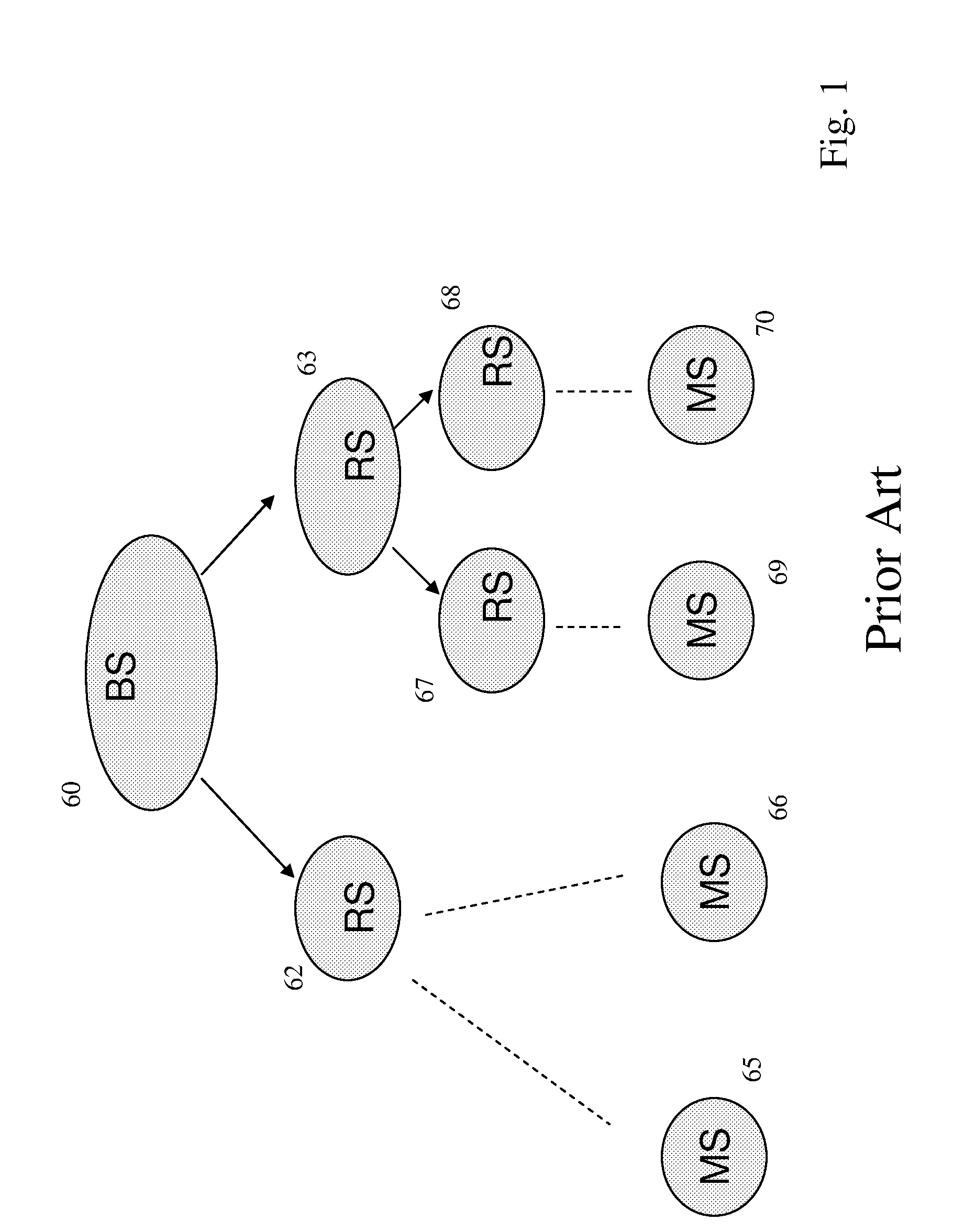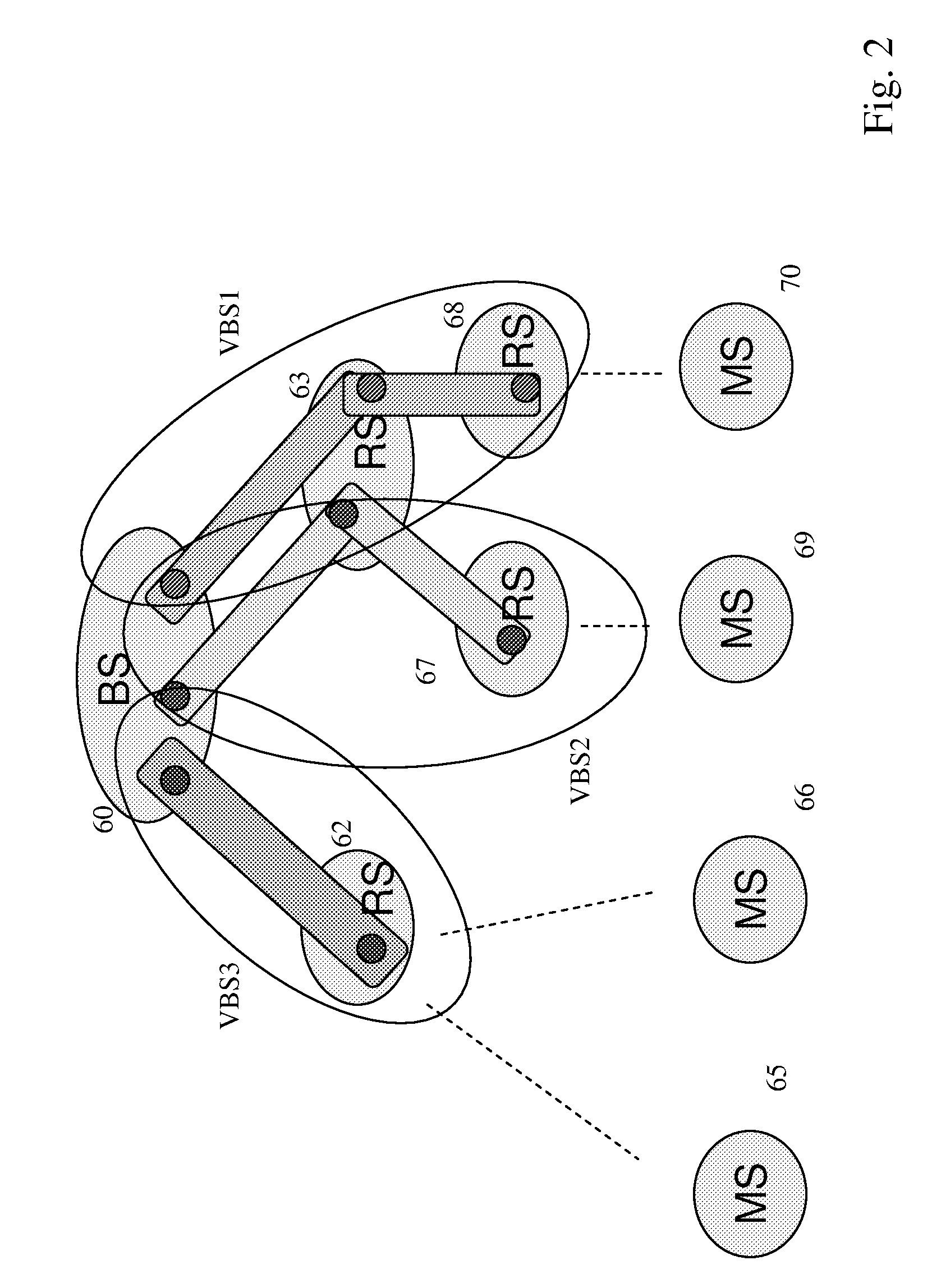Method and system for a wireless multi-hop relay network
- Summary
- Abstract
- Description
- Claims
- Application Information
AI Technical Summary
Benefits of technology
Problems solved by technology
Method used
Image
Examples
Embodiment Construction
[0058]A wireless multi-hop relay access network is described herein. In a multi-hop relay access network, relay stations (RS) are introduced for fixed, nomadic and mobile relay usage between base stations (BS) and subscriber stations (SS). The functional scope of a relay station can scale from being very simple such as an analog signal repeater, to a base station compliant fully functional device capable of radio resource scheduling, security authentication and connection management for mobile stations, in case a base station fails.
[0059]FIG. 1 is a schematic diagram of a very simple two-tier PMP relay network. In this example, the SS are mobile stations (MS). MS is used for the remainder of this description, as the invention provides advantages when used with mobile stations, though it is understood that mobile stations are a subset of subscriber stations to which the invention broadly applies. At the tree trunk level, BS 60 communicates with RS 62 and RS 63. RS 62 in turn communic...
PUM
 Login to View More
Login to View More Abstract
Description
Claims
Application Information
 Login to View More
Login to View More - R&D
- Intellectual Property
- Life Sciences
- Materials
- Tech Scout
- Unparalleled Data Quality
- Higher Quality Content
- 60% Fewer Hallucinations
Browse by: Latest US Patents, China's latest patents, Technical Efficacy Thesaurus, Application Domain, Technology Topic, Popular Technical Reports.
© 2025 PatSnap. All rights reserved.Legal|Privacy policy|Modern Slavery Act Transparency Statement|Sitemap|About US| Contact US: help@patsnap.com



